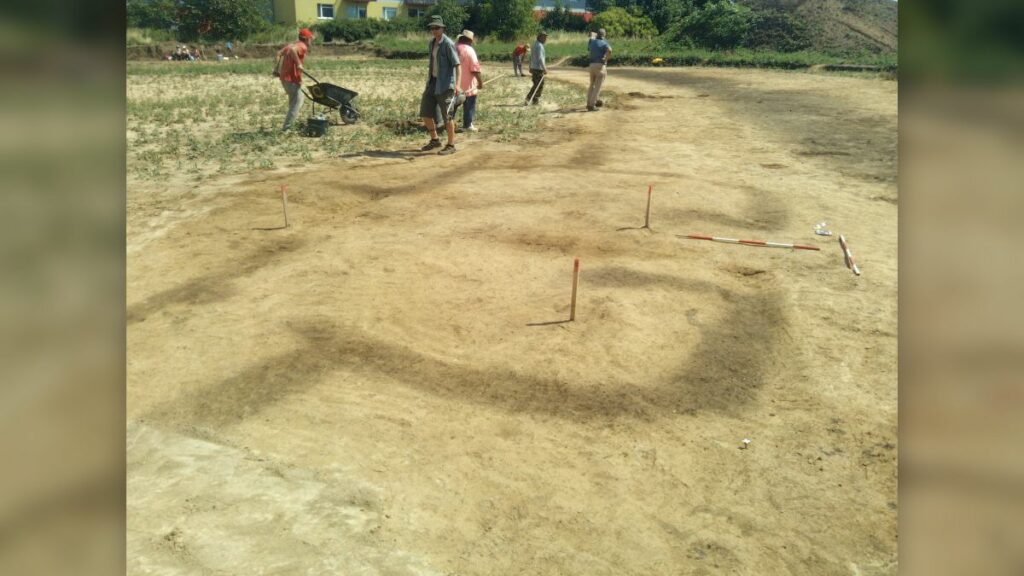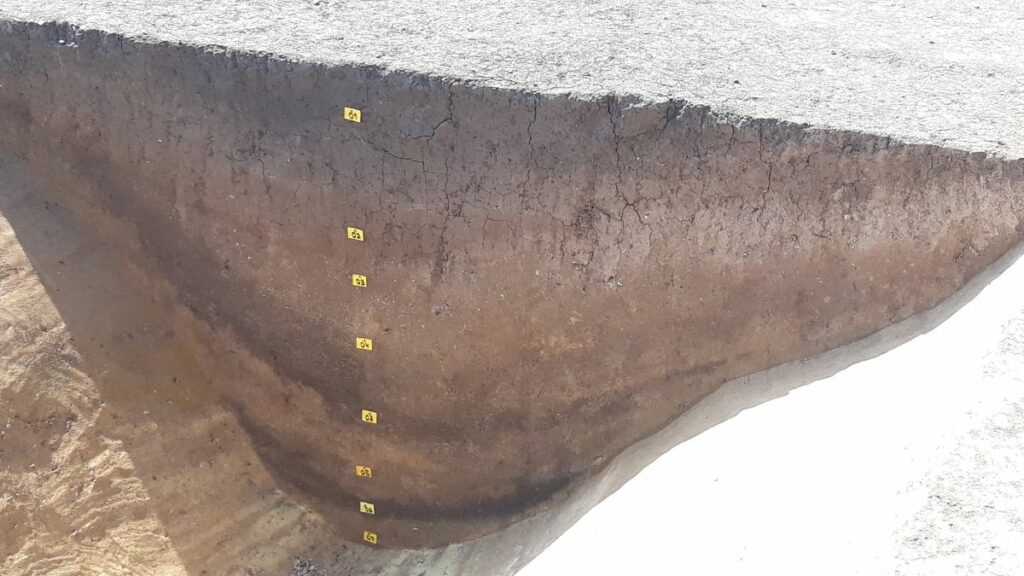Archaeologists digging near Prague have discovered the remains of a Stone Age structure that’s older than Stonehenge and even the Egyptian pyramids: an enigmatic complex known as a roundel.
Nearly 7,000 years ago during the late Neolithic, or New Stone Age, a local farming community may have gathered in this circular building, although its true purpose is unknown.
The excavated roundel is large — about 55 meters in diameter, or about as long as the Leaning Tower of Pisa is tall. And while “it is too early to say anything about the people building this roundel,” it’s clear that they were part of the Stroked Pottery culture, which flourished between 4900 B.C. and 4400 B.C., Jaroslav Řídký, a spokesperson for the Institute of Archaeology of the Czech Academy of Sciences (IAP) and an expert on the Czech Republic’s roundels, told Live Science in an email.
Miroslav Kraus, director of the roundel excavation in the district of Vinoř on behalf of the IAP, said that revealing the structure could give them a clue about the use of the building.
Researchers first learned about the Vinoř roundel’s existence in the 1980s, when construction workers were laying gas and water pipelines, but the current dig has revealed the structure’s entirety for the first time. So far, his team has recovered pottery fragments, animal bones and stone tools in the ditch fill, according to Řídký.
Carbon-dating organic remains from this roundel excavation could help the team pinpoint the date of the structure’s construction and possibly link it with a Neolithic settlement discovered nearby.
The people who made Stroked Pottery ware are known for building other roundels in the Bohemian region of the Czech Republic, Řídký said.
Their sedentary farming villages — located at the intersection of contemporary Poland, eastern Germany and the northern Czech Republic — consisted of several longhouses, which were large, rectangular structures that held 20 to 30 people each. But the “knowledge of building of roundels crossed the borders of several archaeological cultures,” Řídký noted. “Different communities built roundels across central Europe.”

Archaeologists working on the excavation of the Stone Age roundel. (Image credit: Institute of Archaeology of the Czech Academy of Sciences)
Roundels were not well-known ancient features until a few decades ago, when aerial and drone photography became a key part of the archaeological tool kit. But now, archaeologists know that “roundels are the oldest evidence of architecture in the whole of Europe,” said Řídký.
Viewed from above, roundels consist of one or more wide, circular ditches with several gaps that functioned as entrances. The inner part of each roundel was likely lined with wooden poles, perhaps with mud plastering the gaps.
Hundreds of these circular earthworks have been found throughout central Europe, but they all date to a span of just two or three centuries. While their popularity in the late Neolithic is clear, their function is still in question.

A trench wall revealing stratigraphy (different layers) of the excavation. (Image credit: Institute of Archaeology of the Czech Academy of Sciences)
-
NEWSLETTER
Subscribe for our daily news










